The Johnson J-Station is one of the best pieces of gear I have ever purchased. I relied on this little box for well over a decade and it was the heart of my rig for playing live and recording. Even though it’s long out dated, it still holds up and sounds great today.
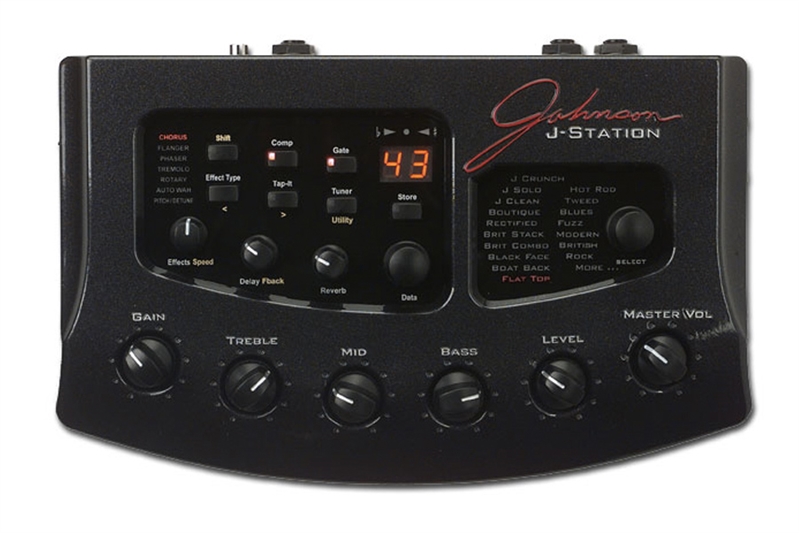
But first, a brief history
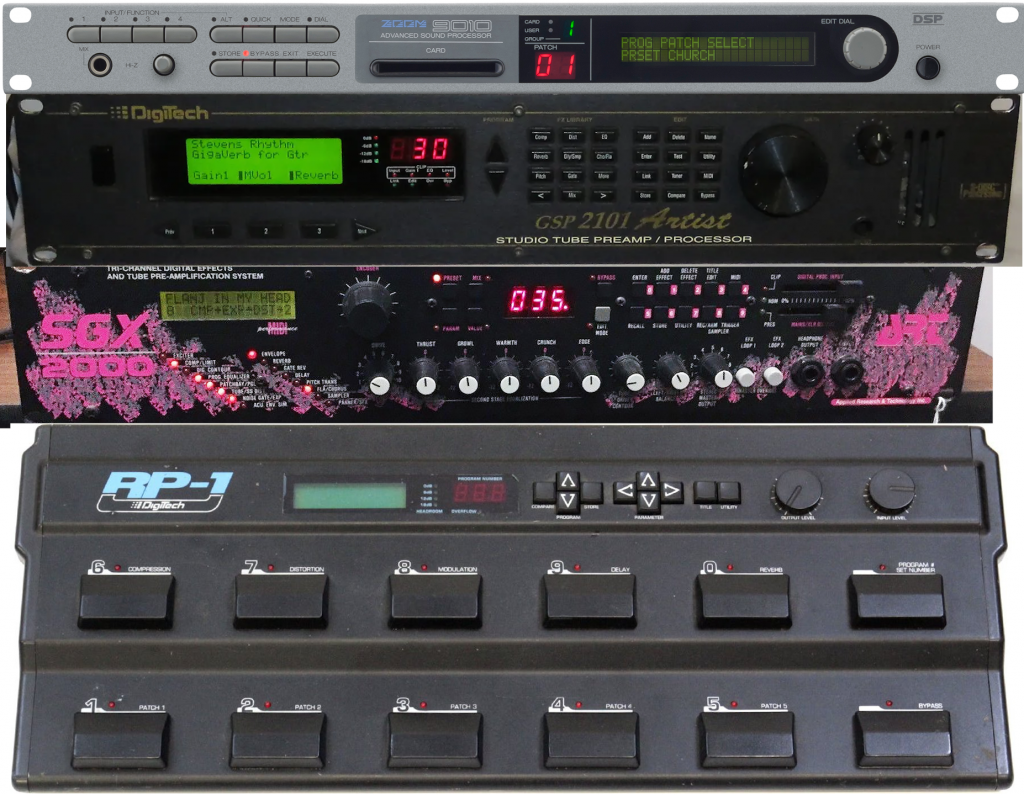
During the 80s & early 90s we saw the rise of a new breed of all-in-one, multi-effect units. They tended to come in either a rackmount or floorboards form factors. Companies like Digitech, Art, Zoom, Rocktron, Korg, etc released a plethora of products that were targeted all the way from beginners to professionals. On paper, most of these were really impressive, and for a relatively low price users received a ton of capabilities. ….but there inevitably was a catch, and many felt they sounded “fake” or “cheap”. Regardless, many of these were a success and units like the Digitech GSP 2101 and RP-1, Zoom 9010, and Art SGX-2000 were incredibly popular and had a significant impact on a lot of the music being released at the time. And then, just like that, all of these were made obsolete by a technology called modeling and a trend towards simpler rigs consisting of amps & a few pedals.
Enter Modeling
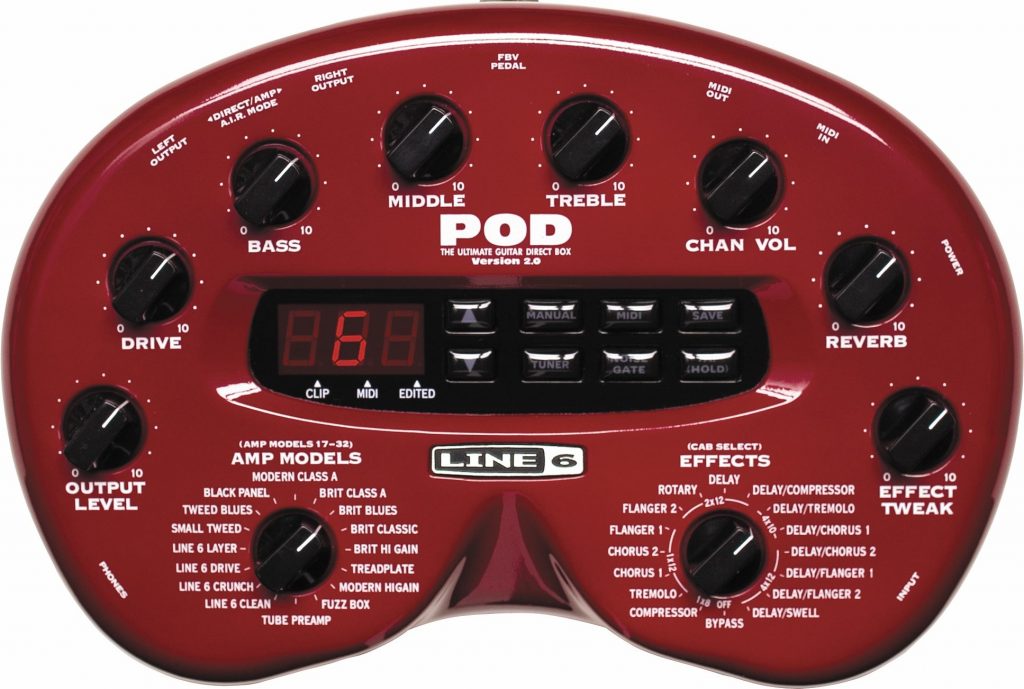
In the late 90’s, Line 6 released the venerable POD. Rather than creating flavors of distortion and overdrive, the POD was legitimately emulating, or modeling as the name suggests, amplifiers. At a relatively low price point of ~$300, guitarists would have all the amps, speaker cabinets, and effects than they could want on a tiny footprint made to sit on the desk. This was a game changer because the sounds were *really* convincing of mic’ed sounds from the amplifiers they were modeling. Line 6 and the POD quickly became the Kleenex/Coca-cola for modelers, there was massive adoption, and it definitely created a shift in the guitar market.
Johnson Amplification was the PepsiCo of the modeling world and released their line of amps and the J-Station shortly after Line 6 hit the scene. The J-Station was clearly their answer to the POD and sported many of the same amps & cabs with high quality 24 bit processing an A/D & D/A converters in a unit that was built like a tank with a great user interface. I didn’t really care about any of the specs just the sound and that’s ultimately why I chose the J-Station and stuck with it for so long.
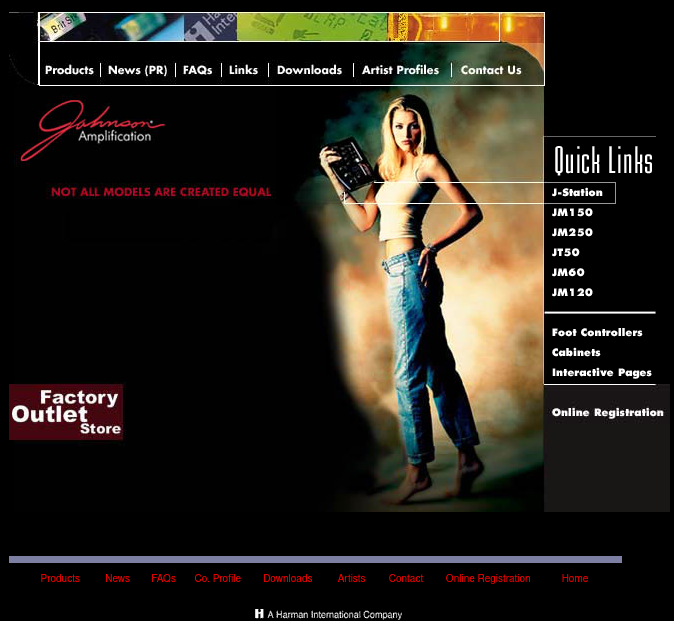
In the Summer of 2001 I got a new church gig and they were pushing hard for a silent stage. I was mic’ing a Fender Hotrod Deluxe off stage and had a small pedal board at my feet. The rig worked OK, but our sound guy suggested I get a POD and thought it would be an improvement over mic’ing my amp at a low volume. On his advice I went to the local Guitar Center to take a look. I went with a good friend and we A/B’ed the POD 2.0 with the J-Station and we both agreed the J-Station sounded significantly better. What made it an even easier decision is the store was blowing them out for only $150. I was so broke at the time I had to borrow the money for it. In hind sight, I’m really glad I did.
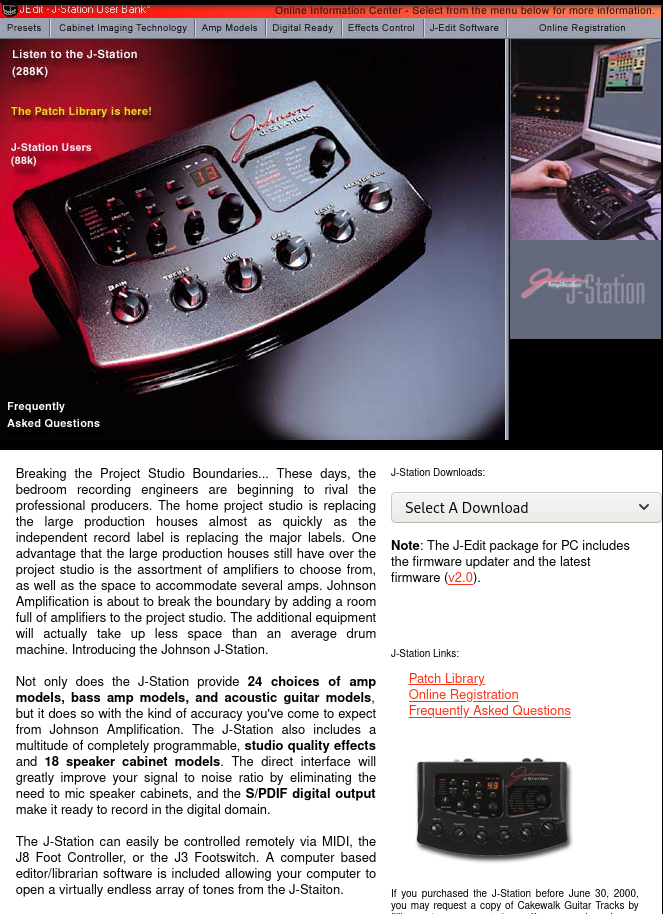
Legit PC Editor
With very little effort I was able to dial-in several usable sounds ranging from clean, crunch, to basic lead sounds. This was sufficient to cover my church gigs, but the presets weren’t exactly inspiring. I felt there was more potential in the unit and was determined to find the magic combination of settings to get where I wanted to go. Johnson provided software called J-Edit that made the tweaking presets much quicker and they also had an on-line community for sharing presets. While primitive by today’s standards, it was perfect for the time and dramatically increased the value. It was also really convenient to able to properly backup & restore these units and the software made that simple.
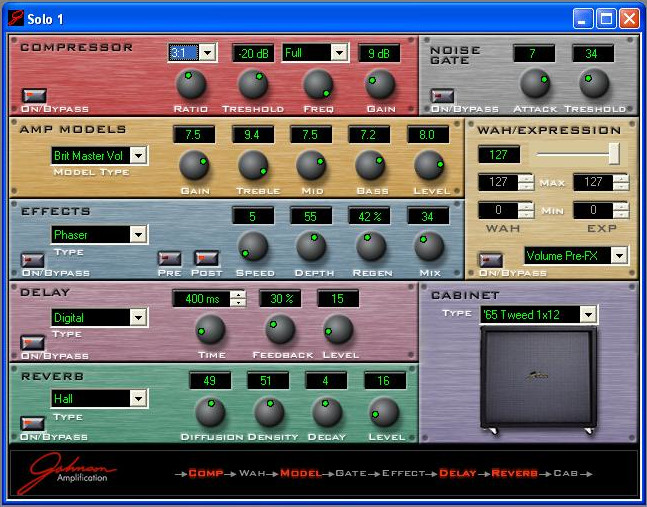
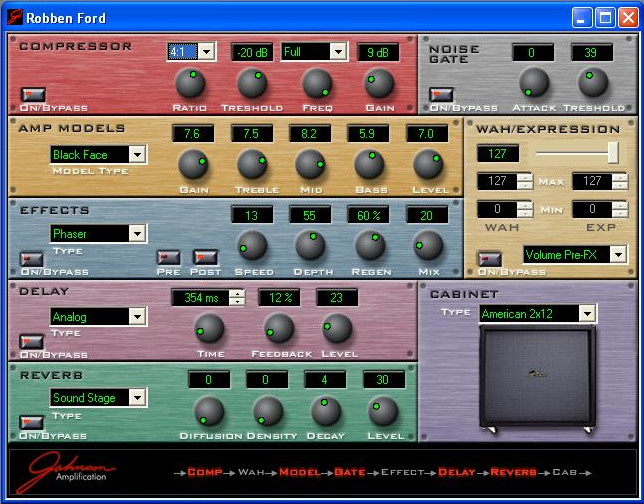
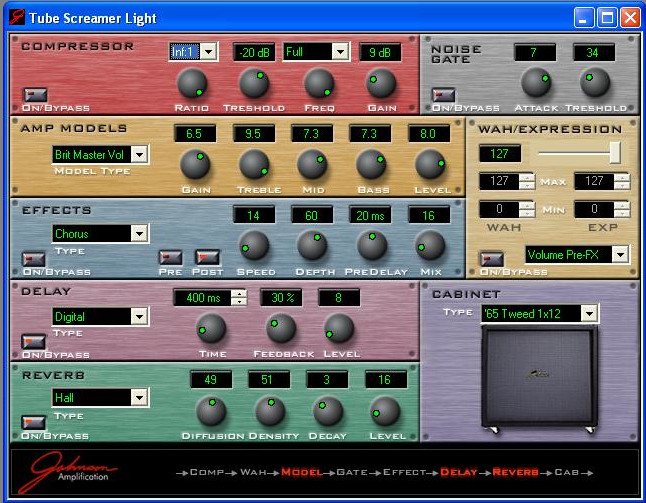
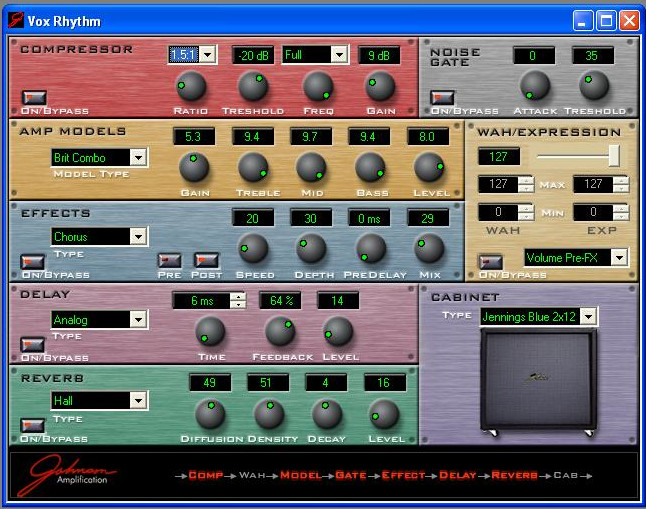
The J-Station is also largely responsible for getting me back into computers. At the time I was rockin’ an ancient Pentium Pro 166 with Windows ’95 and wasn’t capable of running the wonderful J-Edit software, nor did I have any midi capabilities. Wanting to be able to take full advantage of the software created the impetus to save some gig money for a new PC. About a year after I got the J-Station I found the perfect combinations for my playing. Using the Blackface amp for cleans, the Brit Combo w/ Jennings Blue 2×12 for a thinner rhythm sound w/ slight breakup, and the Brit Master Vol pared w/ the ’65 Tweed 1×12 for Lead and/or rolled-off rhythms. Matched w/ appropriate amounts of delay, reverb, etc and it’s amazing the breadth of styles these patches can cover.
Adapting for Live Use
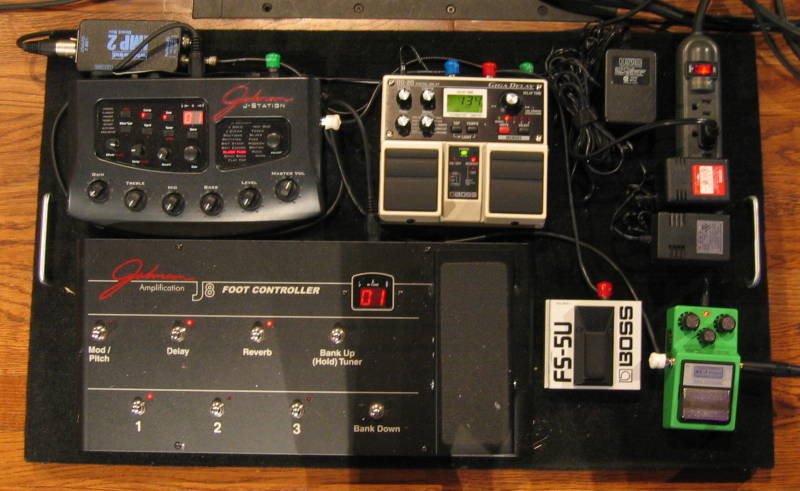
The only other gap was the desktop form factor wasn’t well suited for performances and bending over to change presets wasn’t really an option on stage. Johnson had several foot controllers to address this and I landed on the J-8. It’s just about perfect and in some ways better than the Kemper Remote I use today. There are three presets per bank, each with dedicated buttons for Mod/Pitch, Delay, & Reverb. The CC pedal defaults to volume and has a toe switch to activate a wah (or other optional parameters). The on-board tuner was fantastic and really the only thing missing was a tap tempo switch. There is a button for this on the J-Station, but to access it live requires bending over and pressing it. As seen in the above photo, I got to the point where I was augmenting the J-Station with some pedals; the DD-20 solved the need for getting a tap tempo directly from the J-8.
The Value of the J-Station
From 2001 to 2014 I was using the J-Station for recording and almost all low volume gigs (e.g. church, weddings, private parties, etc). At one point I owned three of these units and left one on my desk, one at church, and the other in my car as a backup. Maybe the coolest gig I used the J-Station for was the time I was hired to record the guitar tracks for ~20 songs for Chucky Cheese. The J-Station handled this beautifully and everyone was really happy w/ the results. Looking back I estimate that I grossed approximately $120,000 in gigs primarily using the J-Station and my Tom Anderson Strat. While that sounds like a lot, keep in mind that spread out over a decade, it’s really not nearly as much as it sounds. I consider the tiny investment I made into the J-Station one of the best gear purchases I’ve made and the ROI was incredible.
I’ve noticed that parts of the guitar community have become polarized on modeling. Some are very anti all-things-digital and almost bigots toward tube amps, while others in the Fractal/Kemper camps are just as bad. My opinion is that modeling is a powerful tool that solves real problems for guitarists. While it doesn’t replace tube amps altogether for me, it does augments their short comings in a pretty profound way. I can’t imagine not owning and actively using both moving forward. (sorry for the mini-rant)
Final thoughts
Today, there aren’t a whole lot of resources available except some remnants of forum posts. Probably the most valuable site that’s dedicated to the J-Station is here: https://www.lakecountycomputer.com/j-station/ The J-Edit software can still run just fine in a Windows XP virtual machine and on Linux using WINE. In case anyone else is still using a J-Station, I’m posting several iterations my presets here: Click here to download them. Hopefully these can breath new life into yours, and you enjoy them as much as I did.
In my opinion this is still one of the best and most affordable backup rigs on the planet. I eventually moved on to the Kemper for several reasons but largely because I wanted my Naylor amp to be more portable and be able to record silently. I never intended to part with the J-Station, but my recent half-hearted attempts to embrace minimalism led me to sell my last one. Thank you John Johnson and the team at Johnson Amplification for making an incredible product that far exceeded anything I could have hoped for.
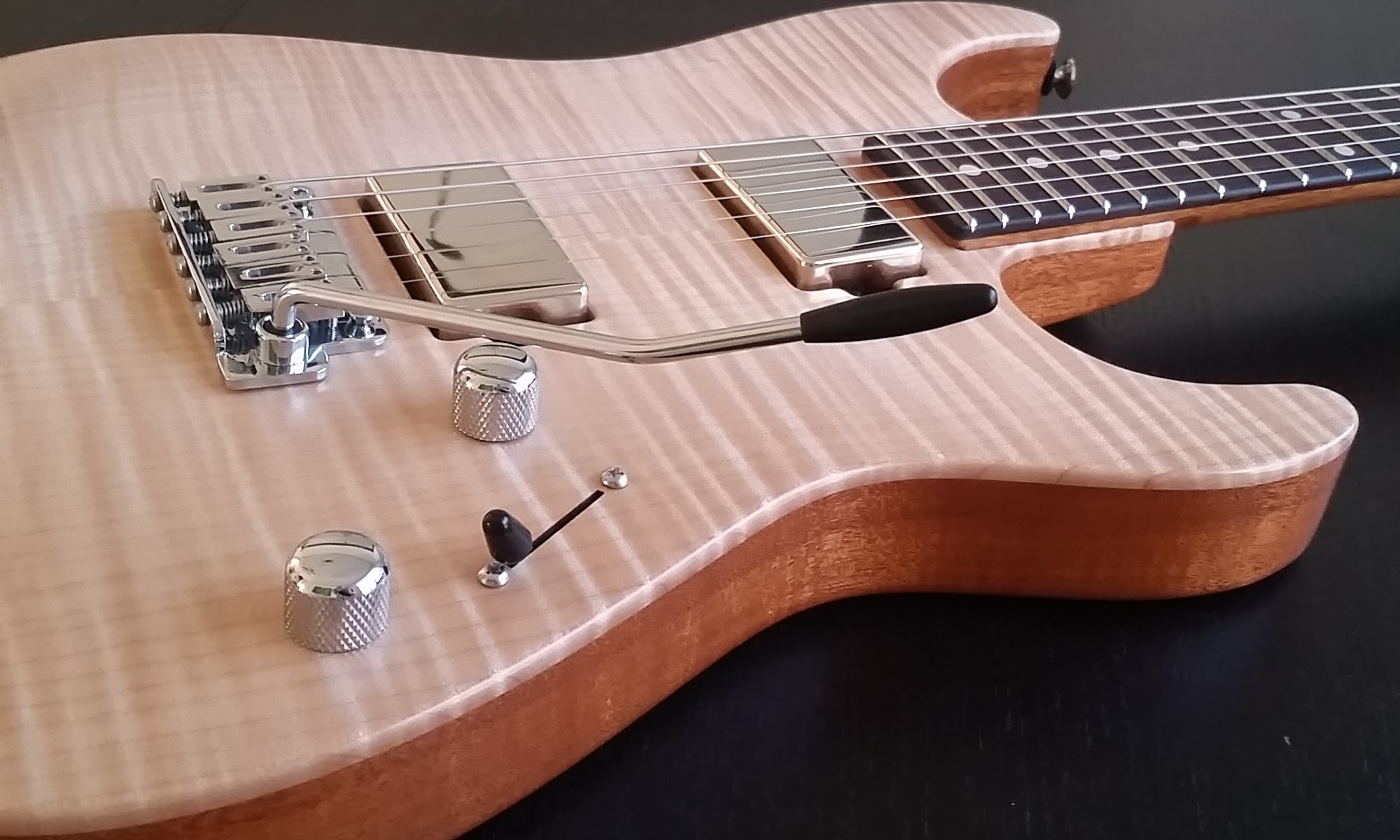
Good morning! I can’t find J-Edit version 1! On the net there is only the “jedit12a.exe” version but I can’t get it to work on windows Xp-10! Thanks for your help!
https://lakecountycomputer.com/j-station/manuals/J-edit%20software/
That’s definitely the latest version and appears to be the correct file name. I’m not sure how much help I can be on the Windows side, except that it runs great on Windows XP. I’ve even gotten it working great on Linux using Wine. This software is pretty old so it doesn’t surprise me if you’re having issues on newer versions like Windows 10. When I wrote this blog post I loaded XP on an old laptop to use jedit and it worked great. I recommend that or a VM.
I’ve been using my j station for 15 years, love it! I use it in my home studio and it suits me perfectly. Glad to hear others still use them
Awesome! I’m glad to hear you’re still enjoying it. I still think these are incredibly underrated.
Hah, I keep meaning to sell mine but then I plug into it and fall back in love with the tones. It was way ahead of the same generation POD in the tone department!
Yes! I agree. Try some of the presets on this post next time you dust it off and see what you think. Cheers!
Do you remember the instructions for unbricking the unit? I can’t remember the procedure. Was something like flashing the J-station at a very precise moment during update.
Oh wow, unfortunately I don’t. I never had to deal w/ a bricked unit. Are you sure your power supply is good? Before you do anything major I would try to test an alternative one just in case that’s an issue. Sorry I’m not more helpful. Good luck and please let us know if you’re able to get it working.
The Factory Reset procedure is used to restore the J-Station to it’s original Factory settings.This procedure will erase all user programmed Presets, and Utility settings.
ATTENTION: Performing this function will erase all user-programmed data.All such data will be lost forever! Be sure you want to erase the memory and start fresh before continuing with this procedure.
The procedure for performing a Factory Reset is as follows:
1. Press the Shift button once.
2. Press the Tuner/Utility button once.
3. Press the Tap-It (>) button until Fr is shown in the Display.
3. Rotate the Data knob clockwise.The Display alternates between Fr and St and the Store button begins
to flash.This is your last chance to change your mind. Rotating the Data counterclockwise or pressing the
Tuner/Utility button will abort the Reset procedure.
4. If you are sure that you want to reset all user settings, press the Store button.
5. Press the Tuner/Utility button again to exit.
GREAT blog and comments. I’m just getting to really know my J-station that has been sitting in a closet for too long.
Had my J Station since new. The Edit software runs on my older windows Vista laptop. It still works great and fun to compare with my newer Pod XT and HD units. I enjoy revisiting old gear to see if we really are advanced with new gear.
Thanks! You should try my old presets and see if you like them.
It’s funny to me because in some ways it’s mind boggling how much we’ve moved forward in tech …..but since we’re still aiming for the same basic tones (tweed, brown sound, etc), it’s hard to *hear* the progress. It’s definitely incremental.
Hi!
Can’t seem to get my digital interface to “see” my J-Station on an XP, Windows 7 or Windows 10 machine so I can’t update my J-Station to 2.0. I am using an M-Audio Uno 1×1 USB MIDI Interface.
Any suggestions?
Hey James,
I used a Creative E-Mu Xmidi 1X1 for well over a decade and it worked great. I haven’t used the m-audio you mentioned, but it looks basically identical and should be perfect for this. All I can think is to double check the basics, which I assume you’ve done. Make sure the switch isn’t set to J-8, ensure the m-audio out -> midi in & midi out -> m-audio in (I’ve reversed this a million times), and it’s been several years since I’ve used the j-edit software and can’t remember the button to sync w/ the j-station, but there are a couple and some settings in the software. I’d recommend double/triple checking all of that. If you still can’t get that working shoot me an email and I’ll see if I can walk you through it over the phone or something. mrguitar.net *at* gmail *dot* com
Cheers
Hi, in order to update the unit the process will only work with windows xp? Is there a way to use windows 10?
The J station was great. I am building a board for FOH and an no amp solution. I think I’m going to buy the new Boss IR2 I think it’s called. It has 11 amps and uses their AIRD tech that I think feels like a real tube amp and responds like one and I’ve had and used a bunch of tune amps over the years as I’m 62 and have been playing since I was 15. I started in 1976 or 77.
If money were no object I would for sure spring for a fractal. I can’t think of another modeller that gives so many firmware updates, has a better software for programming and. nothing co. pares to their effects. Their amps are great too and the only thing close to me is the Boss AIRD stuff. I think it works and boss uses 32 bits, etc. I’m also an old computer geek from working in the IT industry as a Microsoft SQL server database designer. I also used to write ASP web apps that connected to DBs / SQL server. Retired now so I hope to start a blues rock three piece band. Looking now for a drum ER and bass player. Wish me luck…
Great articles and blog. Just found you on my phone from one of your blog posts that showed up on my timeline of my Google pixel phone..
Very cool. .
Thanks man.
Tim…
I don’t know. Worst case if you can’t make it work, it wouldn’t be too difficult to create an XP virtual machine and only use it for the j-station software. I moved to Linux many, many years ago and in that process I forgot everything I used to know about Windows. I can tell you that back in ~2009 I was able to use j-edit on a Linux system using wine (“Wine Is Not an Emulator”). I would try to get an XP VM going as a first step. Good luck!
Yeah the IR2 looks great. Honestly, the digital realm has gotten so good. It’s at the point now to where if you can’t get a good sound, don’t blame the unit! ;) If I was in the market now, I probably wouldn’t get a kemper. ….but at the same time it still sounds so good I have no desire to upgrade. Good luck w/ the three piece band. Cheers
Hi. Great blog. Thanks for your contribution. Quick question – I still use my J station for recording, but for Live use I wonder if there is any way to disable the amp models? My email is nicholassimpson@aol.com, if that’s easier
Hey Nick, sorry for the delay. I know they make it easy to disable the cabs, but I can’t remember if it’s possible to disable the amps. I doubt it’s possible, but the manuals should still be available online and say if it’s possible. I did have pretty good luck running mine into the fx return on a Fender hot rod deluxe for a few gigs. You might want to experiment with something like that and see if it works for you. Long life the J-Station!!!! Cheers,
My first pedal was a j station and I’m ordering. One right now nobody mentioned the rectifier distortion is so much better than the pod or DigiTech period not a fan but my last name is Johnson so it has always been my favorite can’t wait to fall in love again get rectified
Awesome, yeah it’s funny how outdated it is on one hand, but I still think it holds up. It was an epic unit IMO.
Hello, I have a used Johnson Jstation arriving tomorrow. Is there an easy way to tell if the 2.0 update was installed on it? Also is there a place I can download the 2.0 update if needed? Thanks
Hey sorry for the delay. I believe when the J-Station starts up it shows the firmware version. It’s been a while since I’ve fired one up, but I think that number flashes by pretty quickly. I know the manual is still available and covers how to look this up. I believe they bundled the firmware with the jedit software. Just grab that and you should be good to go! Congrats on getting one of these.
I still have 3 of these units. 1 of them is beat to hell from gigging and still works even though the edit button is smashed in. I also have both the J3 and J8 controllers. I used the J-station into half stacks for gigs for 20+ years. I changed head and cabs though that time but always had my core sound from the J-station. The only thing that even remotely enticed me to upgrade was Fractal Audio. I still pull the J-station out once in a while to reminisce.
That’s awesome. Sounds like you got maybe have me beat in terms of longevity with the j-station. Congrats!